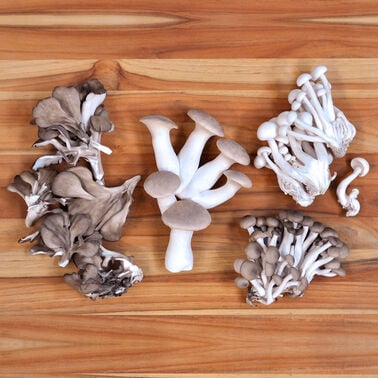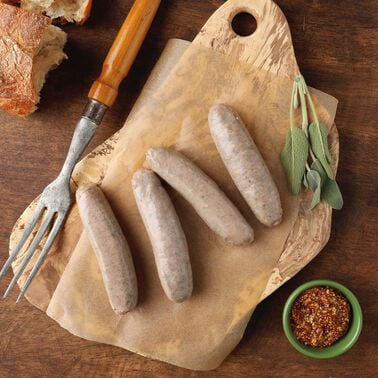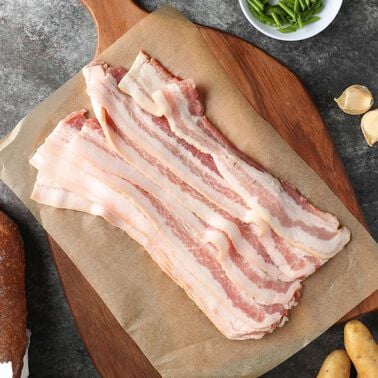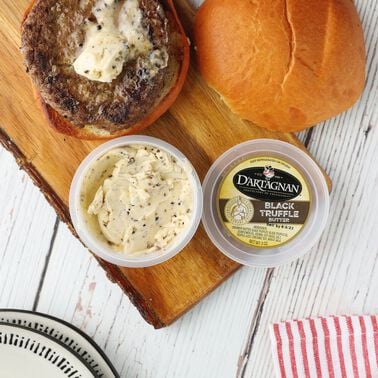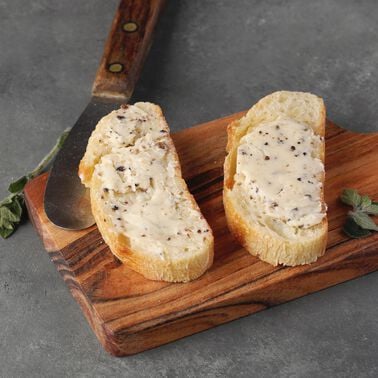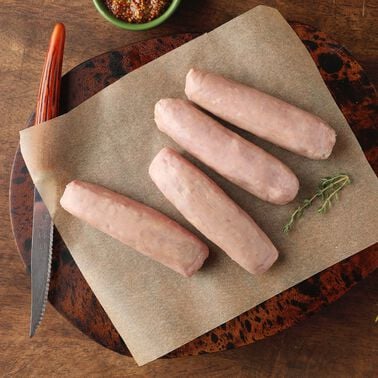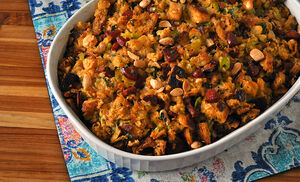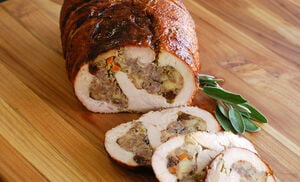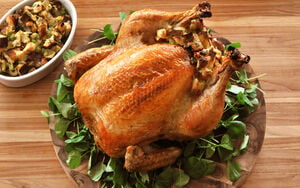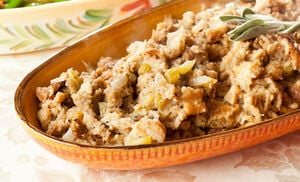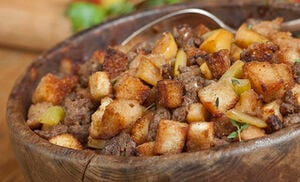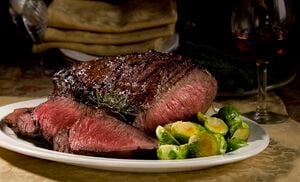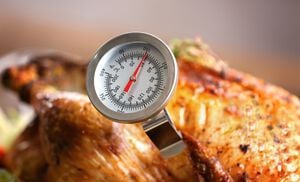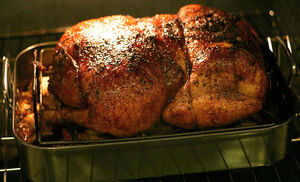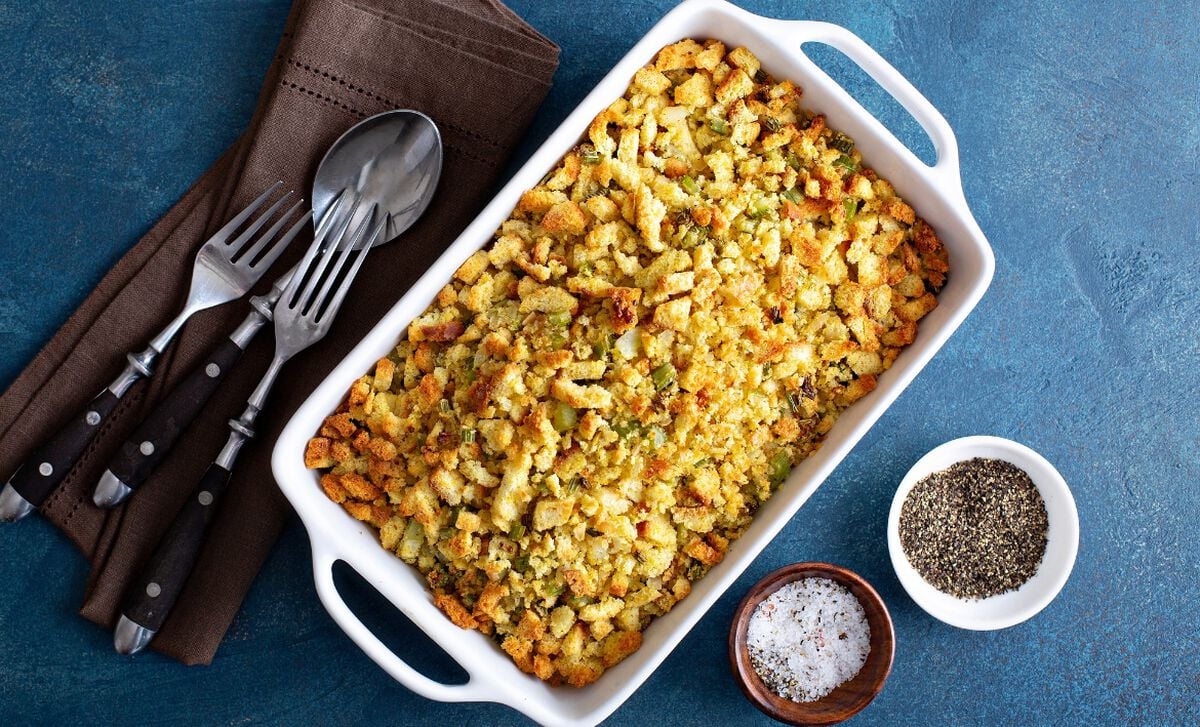
Cook’s Choice
The nature and quality of the bread, as well as how it is prepared, will account for a dressings primary texture. A ‘dry’ dressing will retain a pleasant coarse or even crisp texture. Dressings that call for fresh bread or breadcrumbs, especially when moistened with stock, are softer and more even-textured. What’s nice is there isn’t a hard-and-fast rule as to what should go into a good stuffing in addition to the bread, which gives you the ability to be as creative or traditional as you’d like to be with ingredients. Just think complementary flavors and texture.
Celery, onions, shallots or garlic, parsley, and fresh or dried sage are the basic and most familiar aromatics for many holiday dressings. Classic complementary ingredients include cooked pork or game sausage, sautéed oysters or giblets, chestnuts, mushrooms, fresh fruit like apples, or dried fruits such as prunes, apricots and cherries, as well as nutmeats and other herbs and spices that not only bring flavor, but also add pleasing and contrasting textures.
Change It Up
If you just want to dress up your dressing, so to speak, try substituting one or two ingredients in your usual recipe. Because our Wild Boar Sausage has a rich pork flavor seasoned with woodsy sage, it is a natural choice as a complement to turkey. When used in place of your usual pork sausage, it will intensify the flavor and enhance the character of your dressing without changing it beyond recognition. Other ways to easily elevate your dressing to gourmet status are to use black truffle butter in place of plain butter, or fresh porcinis instead of basic white mushrooms. Both add more tantalizing flavor and interesting texture. If you’re looking for ways to take your dressing over the top, consider our exquisite fresh or prepared foie gras; or shavings of fresh, seasonal truffles, with a little Armagnac thrown in for good measure.
QUICK TIPS
1) Allow 1/2 cup of dressing per each pound of the bird’s weight. If stuffing, bake any excess that does not fit loosely into the bird, in a buttered ovenproof dish.
2) For superior texture:
- Always use good quality bread. If the recipe calls for fresh bread or breadcrumbs, don’t use bread that is too soft-bodied.
- Two-day old bread and breadcumbs are best for dry dressings. You can prepare ahead of time and store in a closed paper bag.
- Don’t prepare your dressing, including cooking sausage or sautéing other ingredients, too soon before stuffing. However, be sure that the dressing has cooled down before stuffing in the bird.
- Fruits, vegetables, and aromatics can be safely cooked a day ahead, but we are talking about superior texture so only do this if timing requires, and keep the fruits and vegetables separate from one another.
- Use your hands to gently mix the dressing, thoroughly combining the ingredients, yet keeping the mix light and fluffed.
- Use one hand to tilt the bird upwards, and the other to place the dressing inside the cavity. It will give you a stronger sense of how full the cavity is getting.
- If you are uncertain how to determine if dressing is too tightly packed, only fill the main cavity about 3/4 full to leave enough room for the dressing to expand and stay light.
3) Never stuff a bird ahead of time. Yes, it really does promote nasty bacteria within the bird that, at the very least, can leave everyone miserable with food poisoning – which is probably not the memorable holiday you are hoping to create.
QUICK FIXES
1) If your dressing comes out too dry for your liking, put moisture back in by adding stock or pan drippings. Place the dressing in a shallow baking or hotel pan (this will make it easier to evenly distribute the liquid). Add your liquid of choice evenly over the entire pan, in a thin drizzle (remember you can always add more, but cannot remove it if too heavy handed). Toss the dressing lightly with a fork to distribute the moisture. Check the dressing for mouthfeel, and repeat until you achieve the desired consistency. If it cools too much, cover the pan loosely with foil and heat for a few minutes in a 250°F oven.
2) If the dressing is too wet, you can bake it uncovered in a 325°F oven to dry it out, and brown it a little in the process. Spread the dressing in an even layer on a lightly greased sheet pan or a sided cookie sheet. Gently spread it to avoid compacting or smooshing it. Check it every 5 minutes or so, again testing for mouthfeel, and take it out when it reaches the desired consistency.
